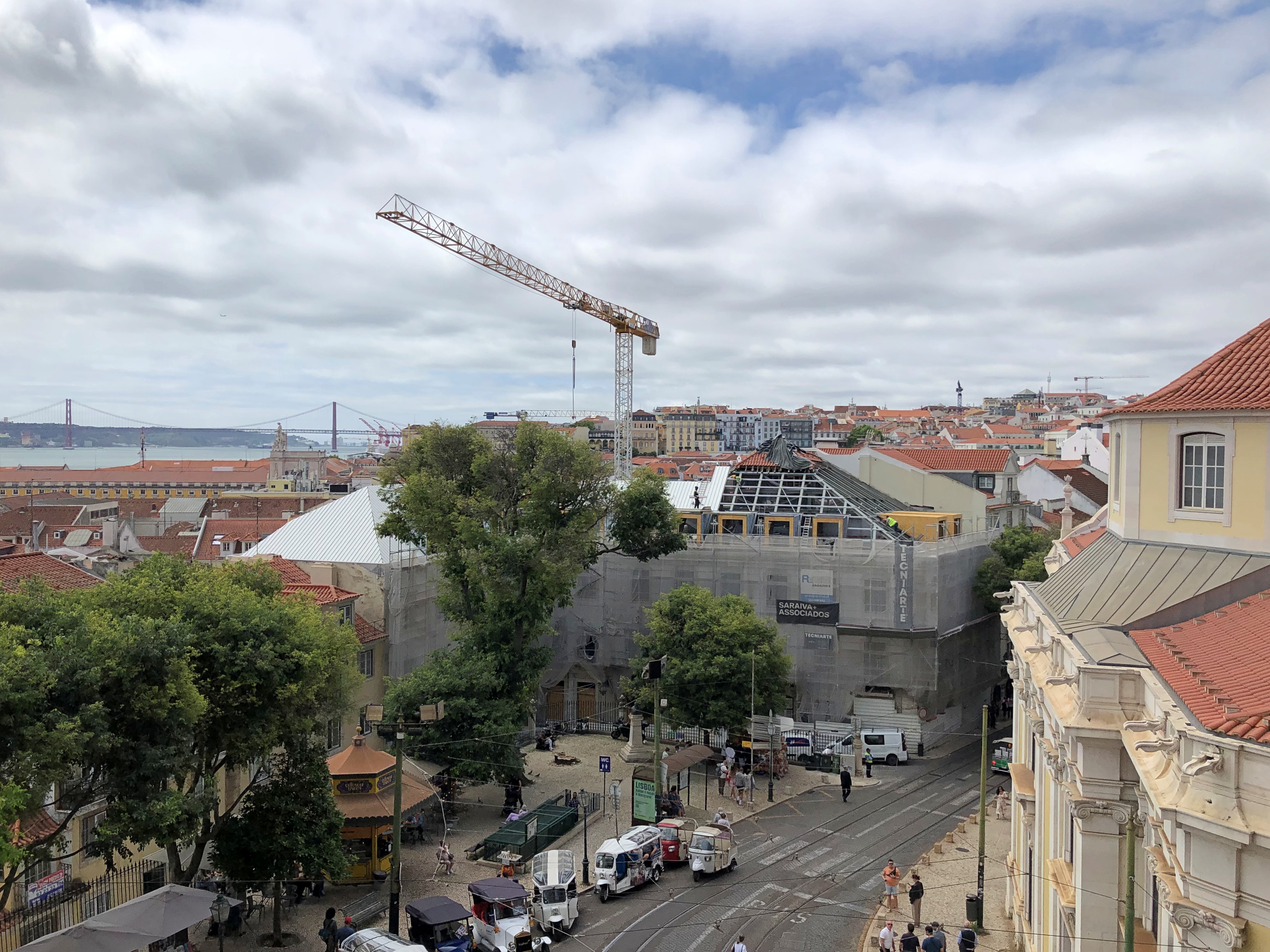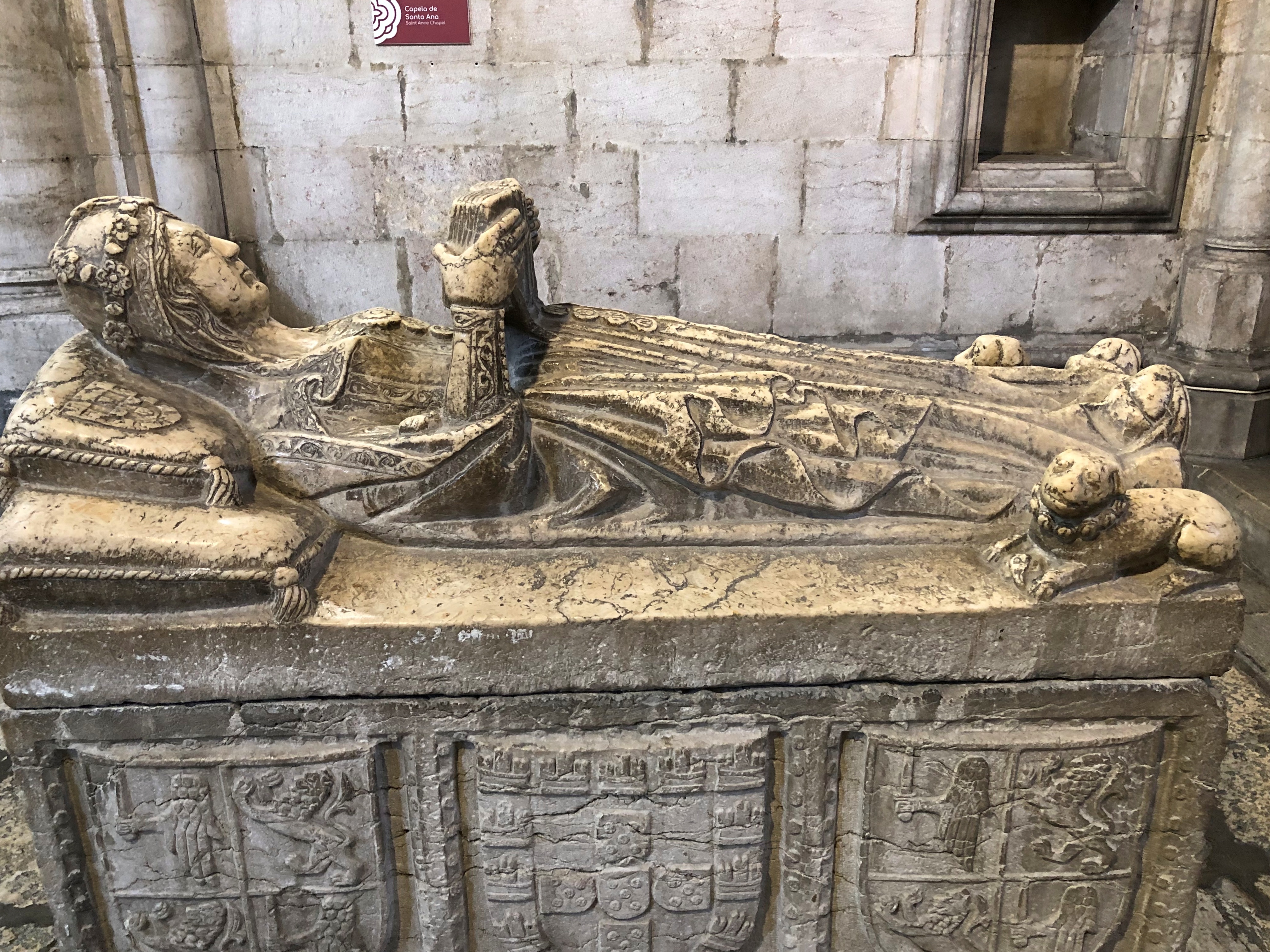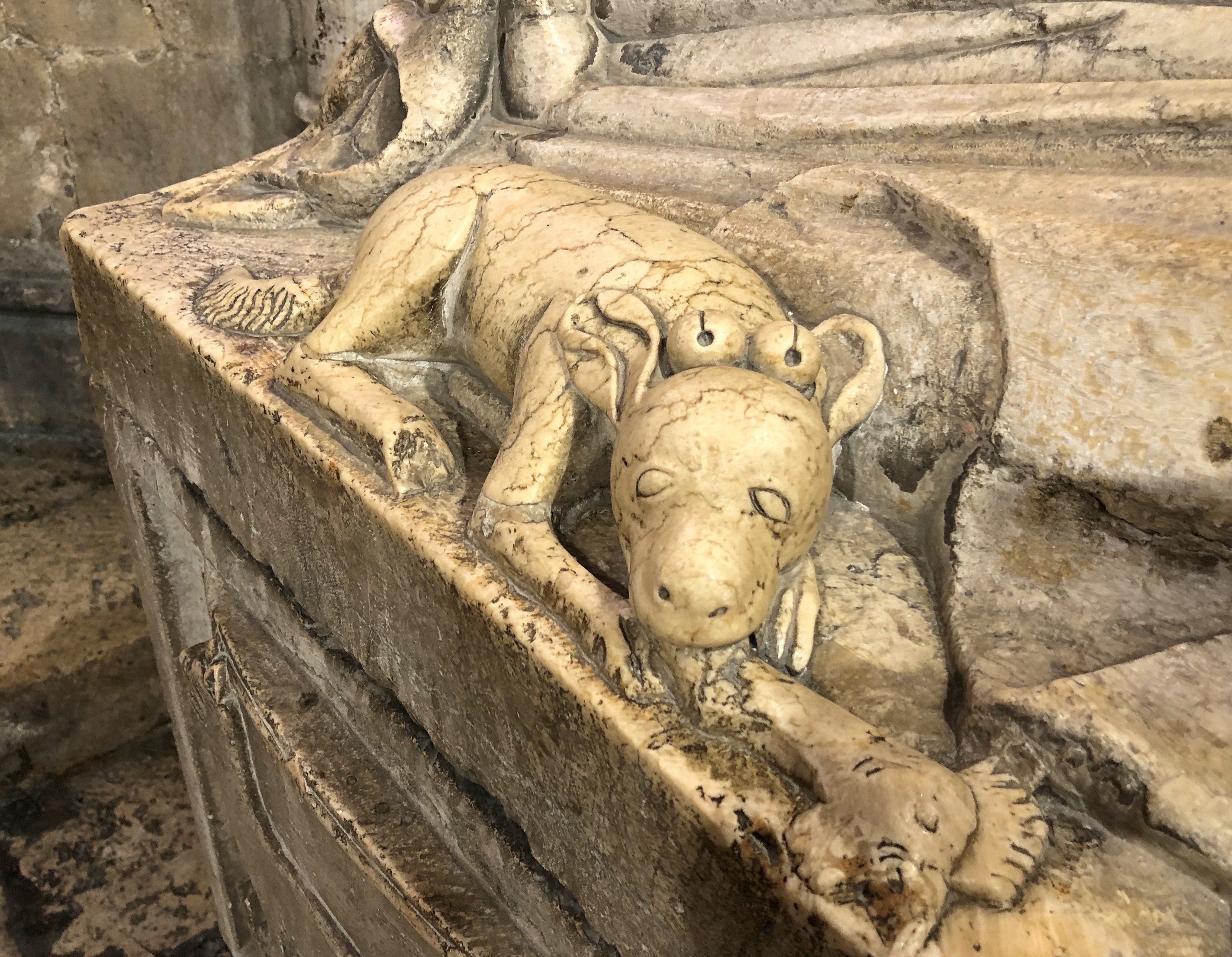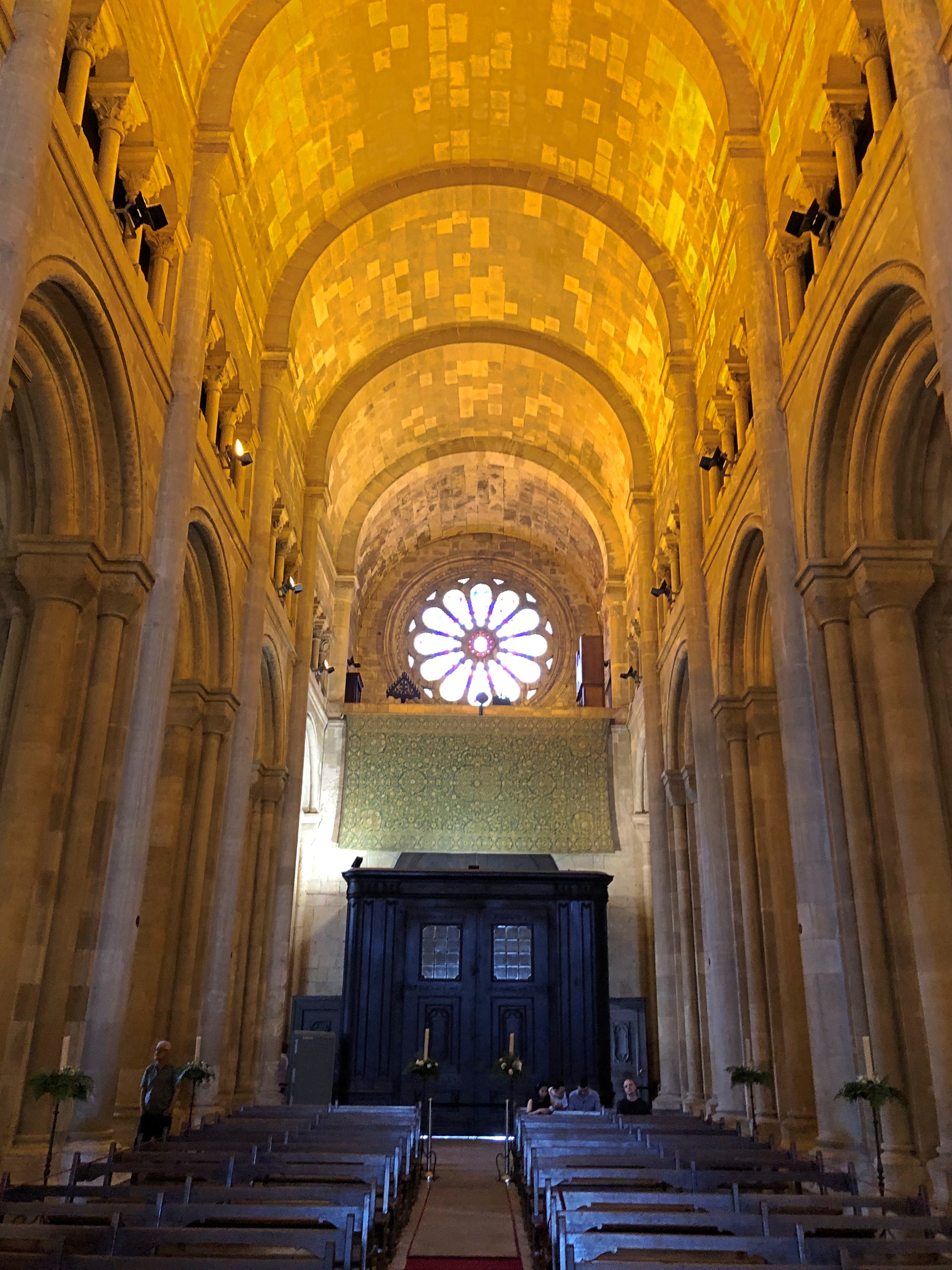Uphill from the flat Praça do Comércio – a lot of places are uphill in Lisbon, its seven hills famed, at least among tour operators – is the storied Lisbon Cathedral. Or in full in English, Cathedral of Saint Mary Major. In Portuguese, Santa Maria Maior de Lisboa or more simply, Sé de Lisboa.

Parked in front of the cathedral are tuk-tuks, motorized rickshaws. Rather than being a form of ordinary transport in Lisbon, they take tourists to tourist destinations. That isn’t a surprise. There’s some horse-drawn transport in Chicago for the same purpose. The surprise is that they’re called tuk-tuks, same as in Bangkok, where they are more ordinary transport, or at least were 30 years ago.
So while the cathedral attracts a fair number of visitors, it didn’t seem crowded, except maybe in the narrow staircase leading both to an exterior balcony overlooking part of Lisbon, and to an interior balcony under the rose window.

Unlike some large churches, the side chapels at the Sé were well lighted and generally not behind bars. Tombs, in this cathedral’s reckoning, shouldn’t be dim places.




Dimmer was the second-floor Baroque Treasury, which displays antique silver, ecclesiastical vestments, manuscripts and relics of Saint Vincent. Low lighting must count as a conservation measure for the treasures.
One question: Where was the sign or memorial or marker noting the spot, or at least pointing to the spot, where a mob tossed Bishop Dom Martinho from a cathedral window in 1383?

The people of Lisbon defenestrating the Bishop D. Martinho de Zamora during the 1383–1385 Portuguese interregnum. Illustration by Roque Gameiro, in Leonor Telles (1904).
Maybe I missed it, but you’d think the cathedral would want to point out something like that with some prominent plaque or sign – like in Prague Castle, where you can see the very windows where the Defenestrations of Prague occurred?
A grim fate for the bishop, if Wiki is correct in citing an early Portuguese chronicle: “In 1383, to celebrate the acclamation of King John I, it was ordered for all churches of the realm to ring their bells. However, upon the lack of any ringing coming from the capital’s cathedral the populace of Lisbon revolted and rammed their way inside the building. Bishop Dom Martinho of Zamora was accused of treason by the populace for being Castilian and schismatic and was, therefore, defenestrated from one of the bell towers.”



